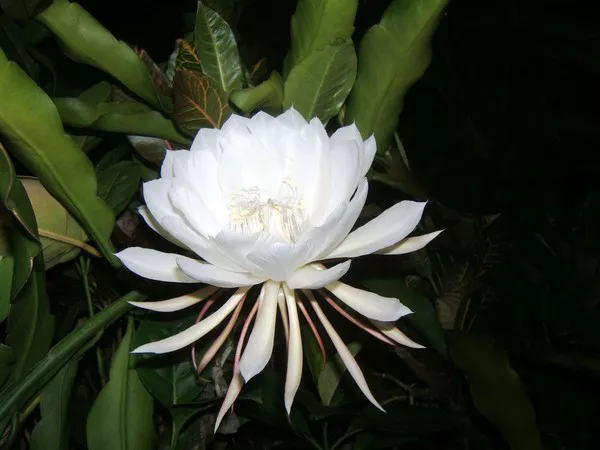The world of flowers is a vast and colorful tapestry, adorned with an astonishing variety of species. Some flowers, however, stand out not only for their beauty but also for their rarity. These elusive blooms, often found in remote and fragile ecosystems, have captured the imagination of botanists, horticulturists, and nature enthusiasts alike. In this article, we embark on a journey to discover the most rarest flower in the world and explore the fascinating realm of botanical treasures.
The Enigmatic World of Rare Flowers
The diversity of plant life on Earth is astounding, with new species being discovered regularly. Within this vast array of botanical wonders, certain flowers are exceedingly rare, making them highly sought after and coveted by collectors and researchers. The rarity of these flowers can be attributed to factors such as limited habitats, environmental changes, and the challenges in pollination and reproduction.
1. The Ghost Orchid (Dendrophylax lindenii)
One of the most elusive and sought-after flowers is the Ghost Orchid, scientifically known as Dendrophylax lindenii. Native to the swamps and humid forests of Florida, Cuba, and the Bahamas, this ethereal orchid has earned its name due to its hauntingly pale appearance and the absence of leaves. Instead of relying on photosynthesis, the Ghost Orchid obtains nutrients from the surrounding environment, making it wholly dependent on specific fungi and trees for survival.
The Ghost Orchid’s rarity is primarily due to its highly specific habitat requirements and dependence on a delicate balance of factors for pollination and propagation. Additionally, habitat destruction and illegal poaching have further threatened its already limited populations.
2. The Middlemist’s Red (Middlemist camellia)
In the realm of cultivated plants, the Middlemist’s Red is often hailed as one of the rarest flowers in the world. Originally hailing from China, this exquisite camellia was once presumed extinct in its native habitat due to over-exploitation. Fortunately, a small number of specimens were brought to England in the early 1800s and are now carefully cultivated in private gardens and botanical institutions.
The Middlemist’s Red features stunning, fully double, rosette-shaped flowers with a vibrant crimson hue. Efforts to conserve and propagate this rare camellia continue, with enthusiasts and conservationists working together to preserve its genetic legacy.
3. The Corpse Lily (Rafflesia arnoldii)
For enthusiasts of exotic and rare flowers, the Corpse Lily, or Rafflesia arnoldii, is a fascinating find. Native to the rainforests of Sumatra and Borneo, this striking flower is renowned for being one of the largest blooms in the plant kingdom. The Corpse Lily’s flowers can reach diameters of up to three feet, with petals that resemble decaying flesh, emitting a pungent odor to attract pollinators.
The Corpse Lily’s rarity stems from its unique and complex reproductive process. It spends most of its life cycle as an unassuming thread-like structure hidden inside its host plant before blooming into its grand, short-lived glory. Habitat loss and illegal harvesting have significantly impacted its already sparse populations.
4. The Yellow and Purple Lady Slipper Orchids (Cypripedium)
The Lady Slipper Orchids, particularly the Yellow Lady Slipper (Cypripedium calceolus) and the Purple Lady Slipper (Cypripedium reginae), are iconic representatives of the orchid family and prized by collectors. These enchanting blooms are native to various regions around the world, including North America and Europe.
The rarity of Lady Slipper Orchids lies in their sensitivity to habitat disturbance and the complexity of their reproduction. Many species rely on specific fungi for germination, and their seeds have poor viability. Additionally, they are often targeted by illegal collectors eager to add these exquisite orchids to their private collections.
5. The Jade Vine (Strongylodon macrobotrys)
Native to the rainforests of the Philippines, the Jade Vine is a rare and alluring flower characterized by its mesmerizing turquoise hue. The plant belongs to the pea family (Fabaceae) and features long, claw-shaped flowers that hang in pendant clusters.
The Jade Vine’s rarity can be attributed to its specific pollinators, which are primarily bats. This makes successful pollination less likely outside its natural habitat. Conservation efforts to protect the Jade Vine’s native rainforest homes are crucial to ensuring its survival.
6. The Gibraltar Campion (Silene tomentosa)
The Gibraltar Campion is a true botanical gem found exclusively on the cliffs of Gibraltar. With delicate pink blooms and velvety silver leaves, this flower has become an emblem of conservation efforts in the region.
Urbanization and tourism development have taken a toll on the Gibraltar Campion’s habitat, making it critically endangered. Dedicated conservation initiatives and protective measures have been implemented to safeguard this rare and fragile species from extinction.
Conservation and Ethical Considerations
The allure of rare flowers has led to increased demand from collectors and enthusiasts, leading to illegal poaching and habitat destruction. As responsible stewards of the environment, it is essential to support conservation efforts and discourage the illegal trade of rare flowers. Cultivating these plants through ethical means, such as seed banks and authorized propagation programs, can help preserve their genetic diversity and ensure their survival for future generations to admire and appreciate.
Conclusion
The world of rare flowers is a testament to the breathtaking diversity and fragility of our natural world. From the ethereal Ghost Orchid to the striking Corpse Lily, each rare flower holds a unique place in the botanical tapestry. As we marvel at the beauty of these elusive blooms, it is essential to remember the importance of conservation and responsible cultivation to safeguard these treasures for generations to come. Let us continue to celebrate and protect these floral wonders, honoring the delicate balance between human fascination and nature’s extraordinary creations.


